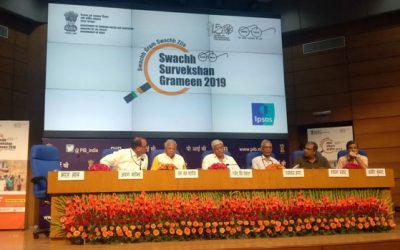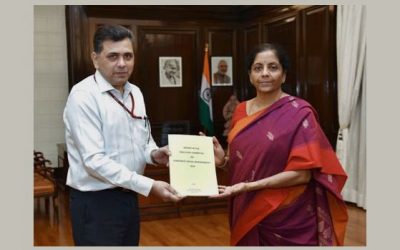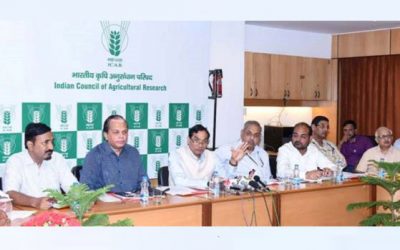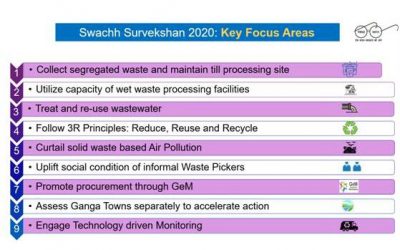
In Focus
Rajeev Papneja, Chief Growth Officer
ESDS Software Solution
With cloud at the foundation, AI is the de facto emerging tech.
With the COVID-19 pandemic continue to govern the global economic situation and forcing businesses to adopt digital ways to achieve greater resilience, enterprises are swiftly moving to cloud services, resulting in a stratospheric demand for data center space.
In a recent interaction with Jatinder Singh of Better World, Rajeev Papneja, Chief Growth Officer of ESDS Software Solution, a Nashik-based managed service provider and data center company, outlines the latest data center trends, the company’s focus areas, and new opportunities presented by digital transformation acceleration.
Excerpts of the interview:
Better World: The last twelve months of enforced shutdowns and social distancing measures have silenced digital transformation critics. With a few exceptions, digital transformation is the only way for most businesses to get successful. In this context, what are the new opportunities that you see in this digital-only environment?
Rajeev Papneja: ESDS is a cloud company, which is now evolving into a digital transformation catalyst. When we say digital transformation, what is happening is that it is no more just a cloud. Cloud is just one essential part of digital transformation. The emerging technologies at the top (such as artificial intelligence) and new business models create a new business way in these challenging times.
During the pandemic, we saw that people want to work more with Indian companies. There is a change in mindset, mainly because India could better navigate the crisis than many countries. Many Indian companies were dependent upon Europe for their data centers and China for manufacturing. As the COVID-19 situation worsened, they witnessed massive upheaval in their supply chains. When the supply chain got troubled, they realized it is better to work with Indian companies because, from a supply chain standpoint, our country is better shaped now as the government started promoting indigenous manufacturing setups.
While COVID-19 presented numerous challenges for organizations of all scales, they also unboxed an era of new opportunities for many new-age thinking companies willing to experiment and refresh themselves to meet new-age consumer demands.
Many startups are emerging, and customers are now willing to work with them because of this mindset shift. SaaS and IaaS are picking big time, and many of the companies are moving to the cloud for the first time to support their growing digital businesses. This has created new opportunities for us.
Like many other modern companies, ESDS has transformed itself to meet the new-age demands and help its customers win in these challenging times.
Today, we have more than 35 to 40 software offerings for our customers in different sectors. They will keep on growing as we are seeing more demand for SaaS now. Of course, the Infrastructure will keep growing because people have realized that all these big companies who have their own data centers went into so much trouble during the lockdown. People are not going to the offices, data centers and need to adhere to the social distancing guidelines for an indefinite period. This has made enterprises realize that it is better to be with commercial data centers in India.
Better World: How do you see the role of AI and machine learning evolving in smartening up data centers?
Rajeev Papneja: Artificial intelligence is becoming the de facto emerging technology while cloud computing forms the basis. If you look at machine learning, artificial intelligence, blockchain, and quantum computing, you will see that they are powered by cloud technology. So, fortunately, we were in that space, and our foundation has been solid. At present, the enterprise ecosystem is moving into a very different environment, where a standalone data center cannot provide everything. So, for example, you might want to have, let’s say, vertical auto-scaling for a specific workload and Microsoft 365 for your productivity needs. That is not something that we offer directly. So, you are directly or indirectly working with multiple technology partners for their unique offerings. Similarly, for specific workloads, we are working with Google Cloud or Amazon cloud.
Rajeev Papneja, Chief Growth Officer, ESDS Software Solution
Rajeev brings to the table vision, purpose, relentless passion for technology, and life of spirituality. He has over 24 years of extensive technology, systems, and software experience on an international scale, including more than a decade of senior management experience in the United States.
He has worked as a senior consultant at major corporations like United Parcel Services, Ernst & Young, Dun & Bradstreet, to name a few, before becoming an entrepreneur.
His longest tenure was with Pfizer Pharmaceuticals, the largest drug manufacturer in the world with its current headquarters in New York, where he spent more than eight years providing enterprise class technology solutions and setting up financial processes.
Awards
- GEM of India
- Bharat Gaurav
- Bharat Ratna Dr. A.P.J. Abdul Kalam Excellence Award
Education
- Doctorate in Business Administration, Frederick Taylor International University, Arizona, USA, 2001 – 2004
- Masters in Computer Science, KTHM College, Nashik, 1994-96
So, we have entered a different era, where you will see that it will not be about just working with one data center.
Artificial intelligence or machine learning, or all these newer technologies, have forced themselves into the system of any enterprise ecosystem that you look at today. The only way for enterprises to survive today is by transforming their business models, understanding their customers’ needs, and providing exceptional experiences. These technologies are enabling enterprises to make that change.
As we advance and AI and ML, robotics will play a crucial role because of companies’ continuous pressure to strengthen processes and deliver exceptional customer experiences.
Better World: Who are your major clients in India?
Rajeev Papneja: Today, ESDS is serving more than 225 governmental PSU customers, the most significant initiatives of the prime minister, and our governments, for example, the Ministry of road transport, right. All the tools we are paying for today across the new range are different from our data center. If we talk about the world’s largest smart meter project, Energy Efficiency Services Limited is replacing 250 million smart meters, all running from our data center.
The banking sector is a big focus area for us. We are working with over 400 banks, many of which are small cooperative banks. We are constantly launching new SaaS and PaaS offerings for government and banking clients. We are integrating technologies such as AI and ML in our data center offerings. None of our customer’s security is ever compromised.
Better World: That’s an exciting statement from you that none of your customers, especially in banking, have ever witnessed a data security breach. How have you been able to secure your customer’s sensitive data consistently?
Rajeev Papneja: Most of the time, you see the security compromises happening in banks. They are on-premise databases. We need to understand security because it is challenging to attack something you don’t know. And that is what cloud technology gives you. You don’t know where your data when you don’t know where your information is; how will you attack something?
Second, the most significant vulnerability today is an insider threat. Most of the threats you would have seen, or the data leaks that have happened are their sheer size. For us, it is only zero and one. We don’t know what is there. It doesn’t make sense to us.
All these big government customers are utilizing our security operation center (SoC) as a service (SoC), all the cooperative banks are using our SoC as a service. We also have our tools that are used by many of the nationalized banks. For example, our VTMScan tool, which is a complete web scanning tool. It scans all forms of online threats and vulnerabilities.
With ransomware attacks happening with zero-day attacks happening, we use advanced AI-ML based science to deliver actionable intelligence to ensure speedy mitigation for security incidents. Another offering is eNlight WAF, a specially engineered intelligent cloud hosted web application firewall helping businesses filter incoming and outgoing internet traffic and block threats such as injection, cross site scripting and other attacks.
We’ve also launched SPOCHUB, which is a plug-and-play platform providing industry-specific offerings On Click. It enables the ISVs to display their offerings across the Globe with an “Omni Channel Proposition.”
Overall, we’ve at least 10 to 12 integrated tools that are combined. And of course, human intelligence, as I saw, is how we run our security operations. All the services offered within SoC are a service and subscription-based model. They follow an OPEX model rather than CAPEX by cutting down unsolicited costs.
Better World: Which are some of the most significant trends that you foresee, both from a data center perspective and an overall technology perspective, in the post-Covid environment?
Rajeev Papneja: One thing is for sure that people have embraced the cloud entirely. As we progress, software as a service is going to be very, very big. Going by the various market reports, in the next four years, the market for Infrastructure as a service will be $5 billion.
The market for multi-cloud management services is $10 billion. This, this is I’m only talking about India. If you look at security services, that is also around $2 to $3 billion. The digital transformation industry itself is $700 billion. It encompasses all the different applications that will help these industries evolve their business models to make their processes better, such as collaboration tools. We are currently seeing that people immediately flocked to VDI technologies, to web VPN, to CRM applications to Enterprise Resource Planning, and collaboration tools in digital transformation. These are widely accepted. And people have started moving to the cloud. As we advance, you will see that people will start exploring how we can make our business models, something like, you know, they call it everything as a service takes a so I’ll give you a small example, that there is this company, right? It’s from it’s changing the mindset from selling a product to selling a service.
Whatever mindset or analytics on historical data you could do before COVID does not work in the post COVID era. It has an entirely different perspective. But the good news is, all businesses have the same starting point today. No matter where they were in their journey, they are forced to have an identical starting point. Now whoever takes benefit of this digital transformation they are going to be successful.
Better World: What are your outside India expansion plans for 2021 and beyond?
Rajeev Papneja: Right now, we are already present in the UK. We have two web hosting companies in the UK. We are serving more than 20,000 web hosting customers in the UK. We have a small presence in the US which we never focused on earlier. We will be focusing on the US, also started in the Middle East. We have an office in Dubai we have in Bahrain. We are working on specific opportunities in Bahrain, Dubai, Oman, Egypt, Nepal, Bangladesh, and Utopia. So, there are around 17 countries that we are focusing on. We have already built a data center for unique customer needs. So, what we are seeing is that you know, these countries are where India used to be eight years back. So, for example, if you look at Dubai, they have just started their cloud journey.
Still, companies prefer to use on-premise IT infrastructure. Now, we want to leverage our expertise, whatever we have done in the last eight years for India. We want to make sure that these upcoming countries starting with technology can feel empowered with our unique offerings and technology.







 The Swachh Survekshan 2020 Toolkit launched by the Minister contains the detailed survey methodology and component indicators with scores to help cities to prepare themselves for the survey.
The Swachh Survekshan 2020 Toolkit launched by the Minister contains the detailed survey methodology and component indicators with scores to help cities to prepare themselves for the survey.
 Move #2: The most significant manifestation of this drive is reflected in the recent decision of slashing of goods and services tax (GST) rates for electric vehicles and related services to 5%. While GST rate on all electric vehicles was reduced from 12% to 5%, the rate on charger or charging stations for electric vehicles be reduced from 18% to 5%. Also, hiring of electric buses of carrying capacity of more than 12 passengers by local authorities was exempted from GST.
Move #2: The most significant manifestation of this drive is reflected in the recent decision of slashing of goods and services tax (GST) rates for electric vehicles and related services to 5%. While GST rate on all electric vehicles was reduced from 12% to 5%, the rate on charger or charging stations for electric vehicles be reduced from 18% to 5%. Also, hiring of electric buses of carrying capacity of more than 12 passengers by local authorities was exempted from GST.
0 Comments